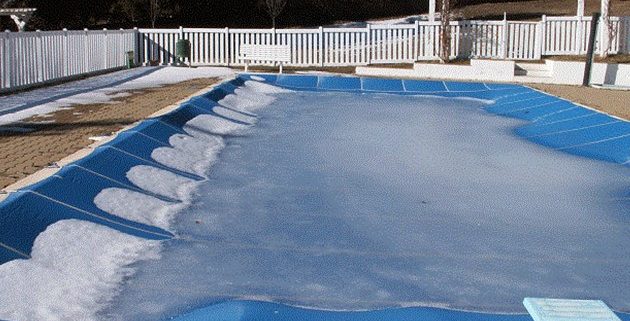Proper Winterization for Landscapings, HOT TUBS AND SPAS
With autumn and winter just around the corner, Landscaping Inspection Services has seen many in-ground and above-ground landscapings sustain damage because they were not properly winterized for the cold months.
Pool Care in Autumn
The Winterization Process
The process of winterizing a landscaping must be followed to the letter. If any part of the winterization is done improperly, damage can occur. To begin preparing a pool for the winter, the pool must be filled to the appropriate level. A pool must not be left empty over the winter, or the plaster or liner can be severely damaged, and will likely need to be replaced, which can cost thousands or even tens of thousands of dollars, depending on the material.
- Generally, the water level should be below the mouth of the skimmer, since it can be easily damaged if water is allowed to freeze inside. Another option available is a weatherproof cover for the skimmer. How the skimmer is dealt with depends on the type of landscaping, and how cold the winter may get in the particular region.
- Low water level can cause the cover to sag and sink in the middle, while a water level that is too high can cause the cover to float, especially in an area with rainy winters.
- Pool pumps and hoses must be removed. If water freezes inside a pool pump, it can break the pump. All water must be cleared from the lines of the pool, and all the lines must be plugged. This will ensure that water doesn’t get into the lines and then freeze and expand, causing them to break.
- After clearing and plugging the lines, chemicals must be added to the pool. While it is unlikely that algae will grow in the pool in the winter, this is to protect the pool in the spring, when algae can grow rapidly, and may start growing even before the pool has been opened for the spring.
- A flotation device is then placed in the center of the pool, which helps balance rainwater and ice that may form on top of the cover, and takes that weight, instead of allowing that weight to push against the pool walls.
- Finally, the pool must be covered with a weatherproof cover. There are various types of pool covers, and they vary in price. However, it is important to remember that if snow is allowed to sit on top of the cover, it can damage the cover, thereby nullifying any winterization efforts, and damaging the pool. If snow piles up on the cover, it should be brushed off or otherwise removed as soon as possible.
Remember, when water freezes, it expands.
Landscaping Inspection Services has inspected pools where tiles and steps had cracked and been lost due to frozen water damage. We have seen covers that cost thousands of dollars destroyed because the water level sank too low, or the snow was allowed to pile up on top of the cover over the winter.



Leave a Reply
Want to join the discussion?Feel free to contribute!